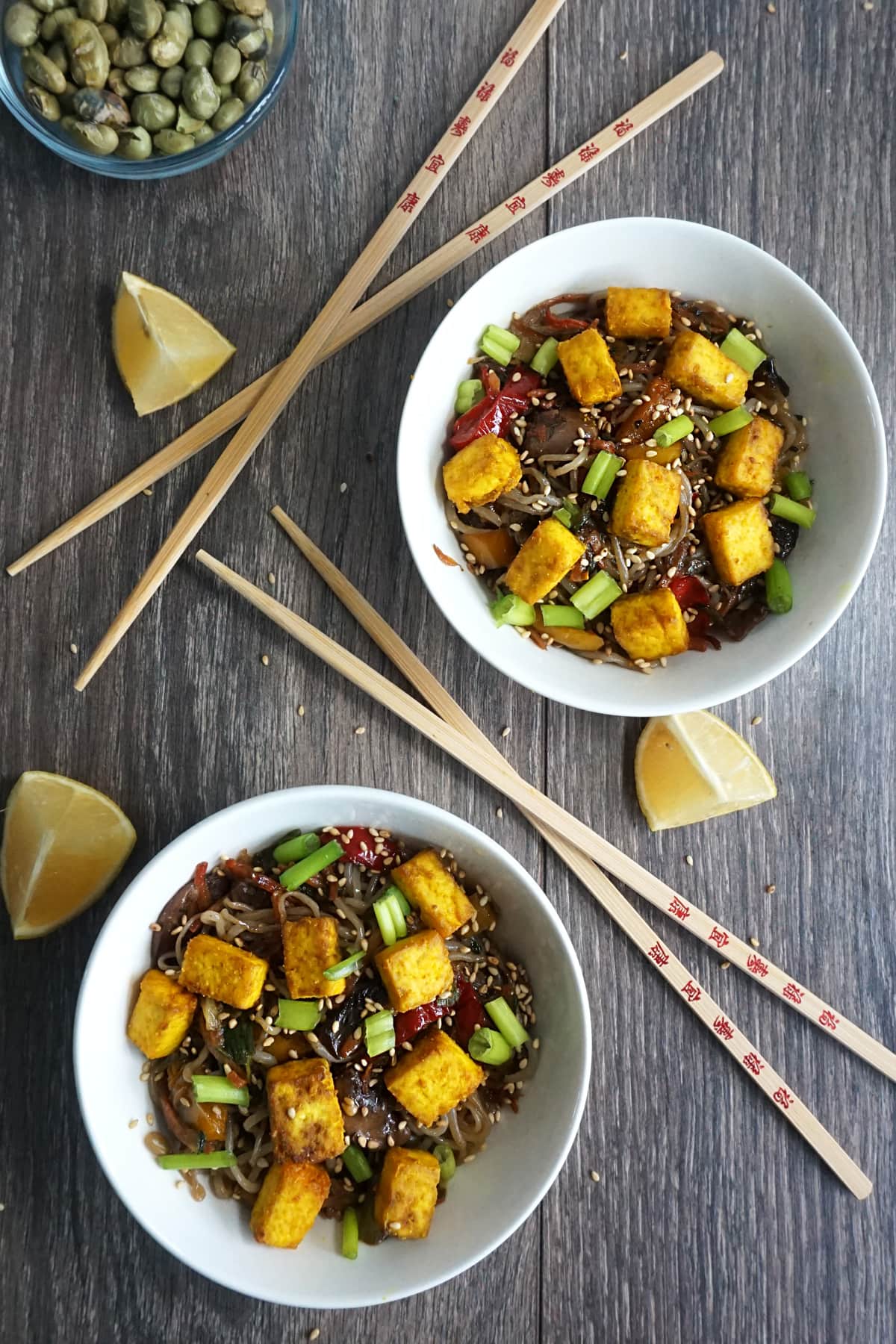
Shirataki noodles are popular with low-carb foodies looking for a pasta replacement. But they're tricky to use, and require proper preparation. I don't use them often, but in this case I have found them to be the perfect faux-pasta for a Keto Vegan Lo Mein.
What Are Shirataki Noodles?
Shirataki noodles (also known as miracle noodles, konjac noodles or zero noodles) are long, white noodles made from konjac, a root vegetable grown in Asia. The carbs in konjac are mostly glucomannan, which is a viscous soluble fiber. That means that the fiber absorbs water to form a gel-like consistency. That's how the noodles get their gel-like texture. The fiber absorbs so much water, in fact, that these shirataki noodles are actually 97% water! Glucomannan is similar to psyllium husk, which you may know as the main ingredient in Metamucil, as both of them are viscous soluble fibers. You can buy glucomannan and psyllium husk powder as an ingredient to thicken keto-friendly stews or to add sturdiness to keto breads. Vegans can also use it as an egg replacement. In this case, noodles are made by boiling glucomannan in water and then rolling the dough into thin noodles. If you don't have Glucomannan or psyllium husk powder at home, I encourage you to try it. Not only are they a handy keto-friendly thickener, but there are health benefits to using them as well.
Health Benefits
Glucomannan is a soluble fiber, and you probably already know that it's recommended to eat plenty of fiber. Fiber helps with digestion, and creates bulk to help you feel full. However, you should be careful not to go overboard. If you typically don't eat much fiber, don't go crazy and eat a whole package of shirataki noodles... that fiber explosion may cause digestive issues if you're not used to it.
Viscous fiber is a prebiotic, meaning it helps feed the healthy bacteria in your gut. Maintaining a healthy gut flora leads to better digestion, a better immune system, and helps to reduce inflammation in the body. Taking probiotics (either as a pill, or within natural foods like yogurt, kimchi, sauerkraut, kombucha, etc.) and then also consuming prebiotics (glucomannan, psyllium husk, inulin, etc.) helps keep your gut flora at healthy levels.
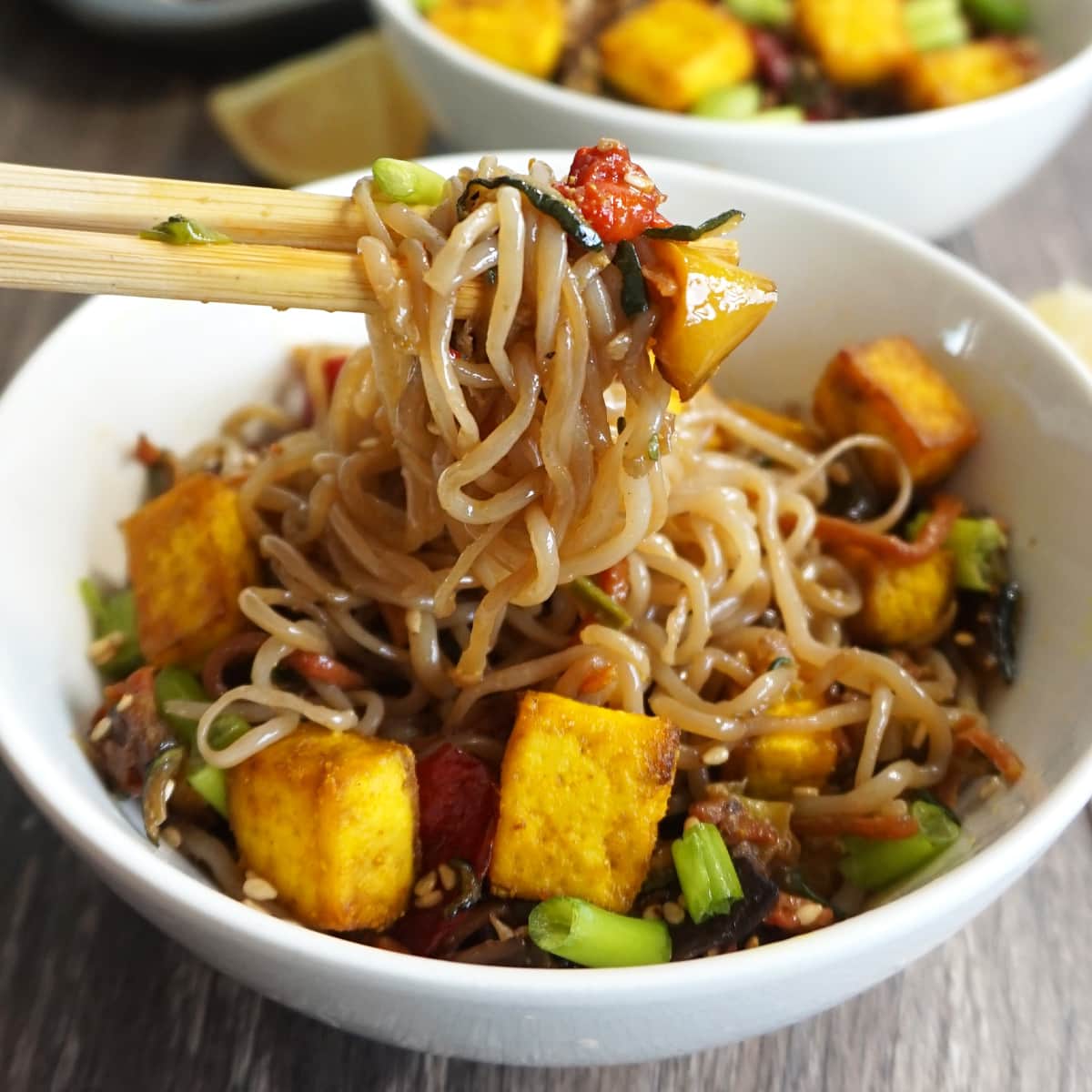
Tips & Tricks For Cooking Shirataki Noodles
Rise the pasta. Boil the pasta. Dry the pasta. Do not skip a step, do not pass go, do not collect $200. These noodles can have an odd, fishy flavor if you don't rinse and boil them. It's also important to dry them out afterwards in an empty pan. This helps them keep a "noodle texture" and maintain a neutral flavor.
Cut the noodles into smaller pieces. Seriously. Shirataki noodles are very chewy, so you do NOT want to twirl a huge amount of noodles on your fork/chopsticks and take a big bite of them. It's not pleasant. Worse, it brings about that moment of disappointing realization that you're not eating "real" pasta. So, to avoid disappointment, cut the pasta into small strands. The best way to eat shirataki noodles is to mix them in with other things, like veggies. Your goal: make sure that each bite is a mix of both noodle and veggie. Every bite should be half noodle and half something else. Too much noodle and your family will complain that you served them Asian-flavored chewing gum.
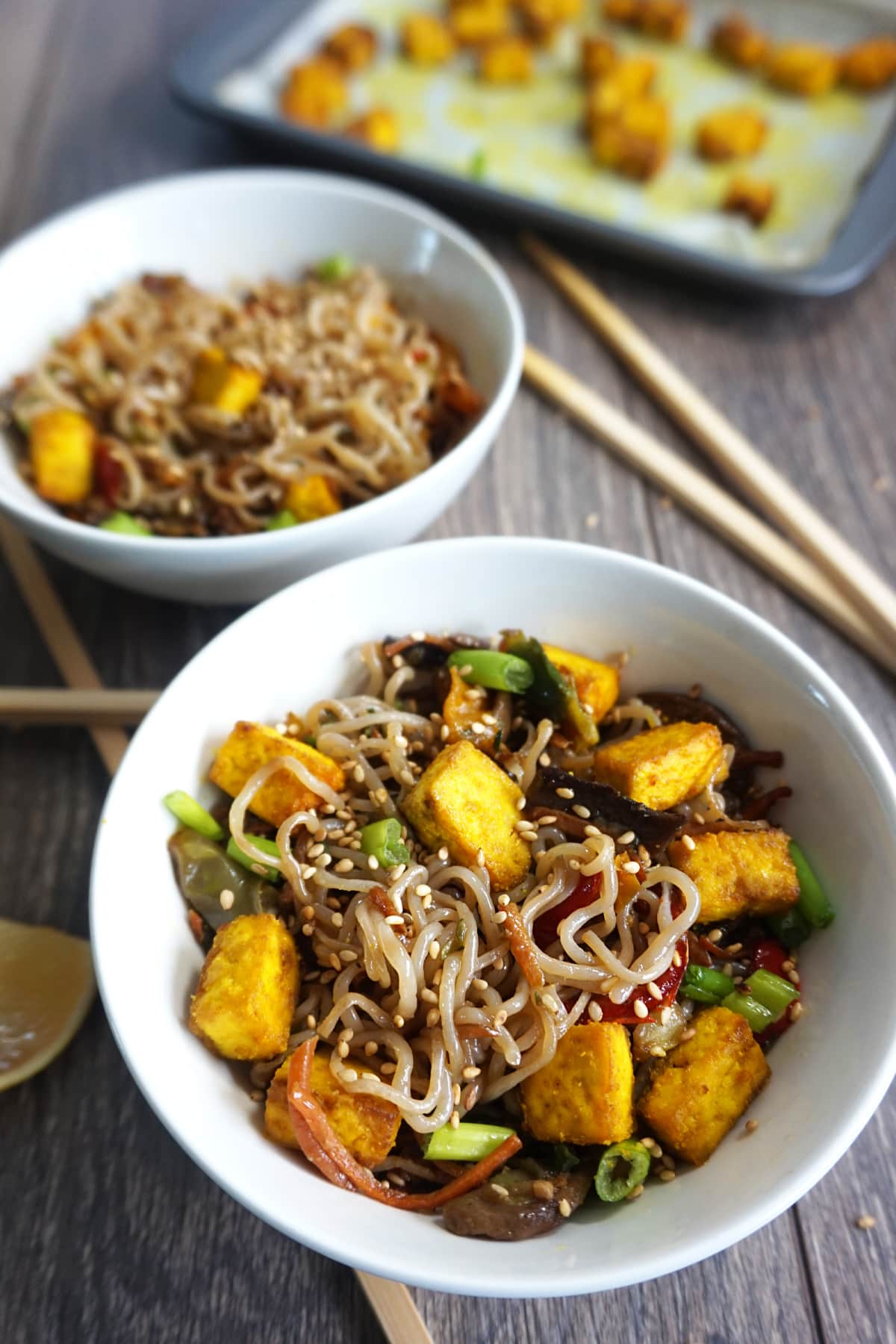
Customize Your Dish
Feel free to swap out some of the ingredients for whatever you have in the house. Here are some suggestions.
Veggies
I used mushrooms, carrots, zucchini, bell pepper and green onion. Here are some other low carb veggies you could use instead:
- Onion
- Snow peas
- Water chestnuts
- Bamboo shoots
- Bok choy
- Cabbage
- Kale, spinach, or other leafy greens
- Broccoli
- Bean sprouts
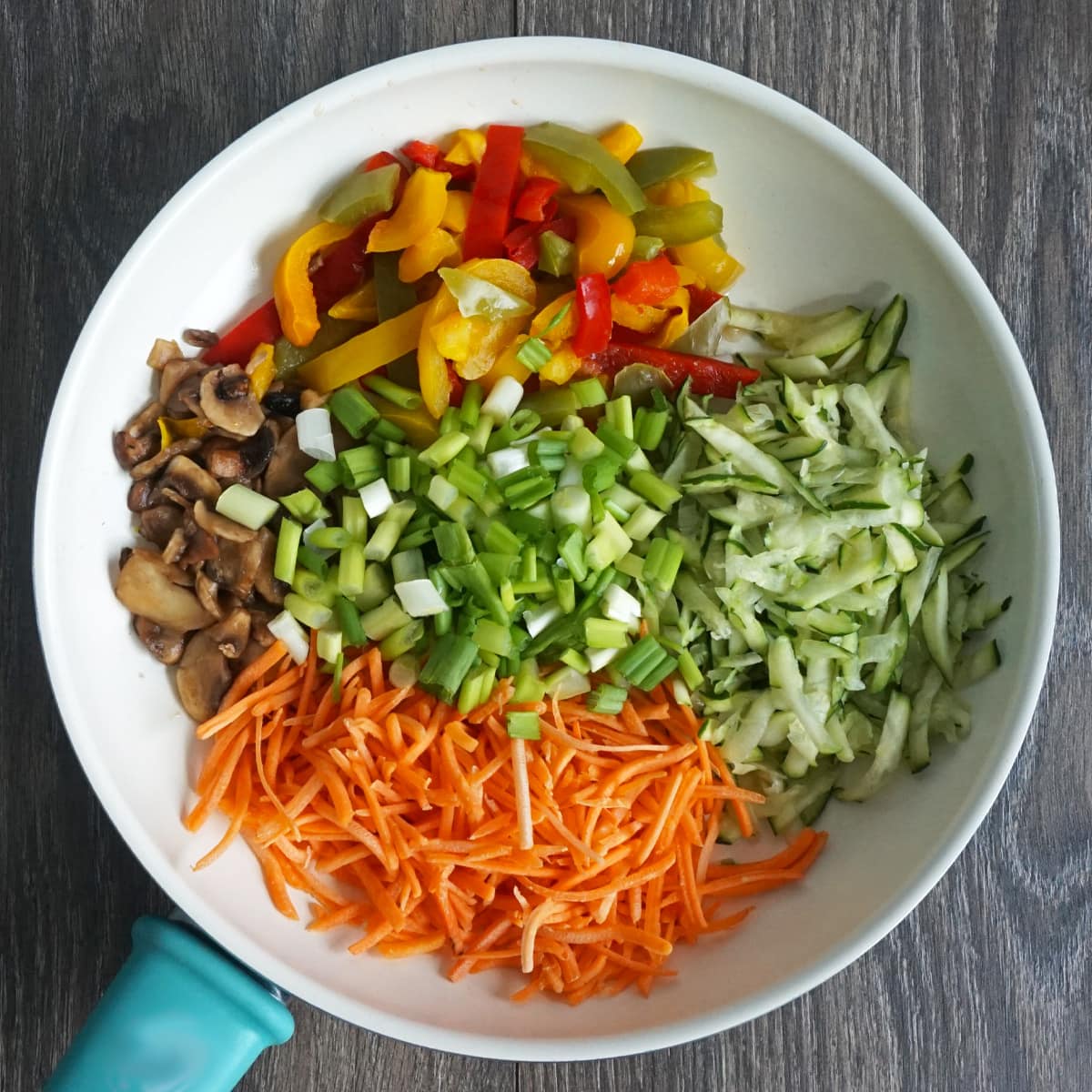
Tofu/Meat
I used baked tofu to keep it vegan, but you could swap it out for any other kind of meat instead:
- Chicken
- Pork
- Beef
- Shrimp
- Scallops
- Fish (preferably a sturdy fish that won't fall apart, like halibut)
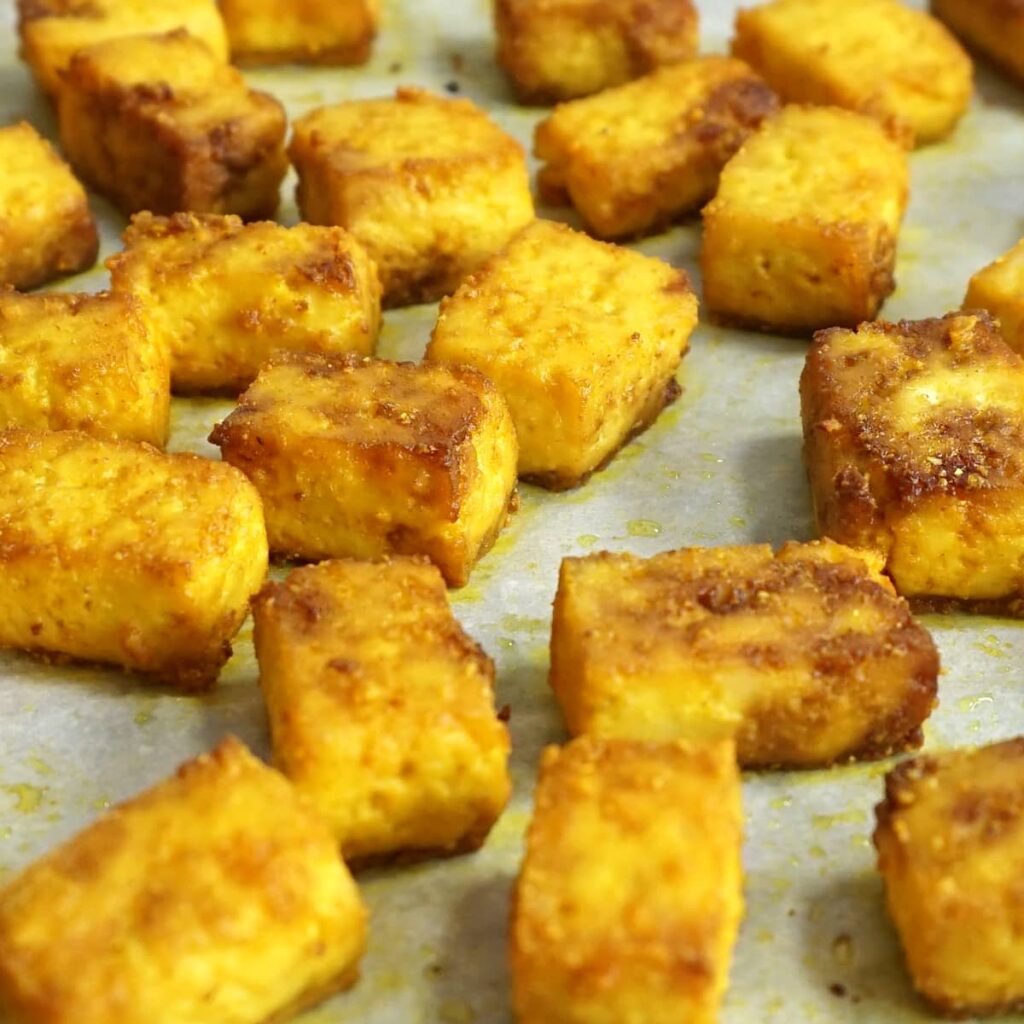
How To Cook Tofu
Baking tofu is actually quite easy, and it pairs well with this Keto Vegan Lo Mein dish. I provide step-by-step directions in my recipe for Baked Turmeric Tofu with garlic, ginger, soy sauce and avocado oil. Yum!
I hope that by now you're excited, not intimidated, to make this dish. It's fairly easy as long as you follow the directions. Let me know how it worked out for you in the comments section!
📖 Recipe
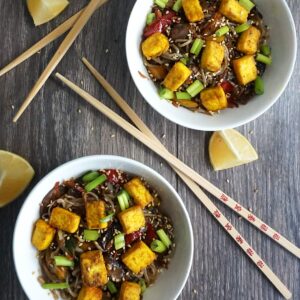
Keto Vegan Lo Mein (Shirataki Noodles)
Ingredients
- 8 oz shirataki noodles
- ¼ cup sliced mushrooms
- ⅓ cup sliced bell pepper
- ¾ cup shredded zucchini (from one medium zucchini)
- ½ cup shredded carrots
- ⅓ cup chopped green onions
- 2 tablespoon avocado oil
- 1-2 teaspoon fresh diced ginger
- ½ teaspoon fresh diced garlic
- pinch salt and pepper
- 1 teaspoon sesame oil
- 1 tablespoon soy sauce
- ½ recipe baked tofu
Instructions
- Remove the noodles from their package and place them in a colander. Rinse them thoroughly under fresh running water. Then, boil the noodles in water for 3-5 minutes. Drain the water from the pot and then return it to the stove. Continue to cook the noodles in the pan until they are dry, about 5 minutes. Once they're done, use kitchen scissors (or a knife) to cut the noodles into smaller pieces and set aside.
- Chop and/or shred all veggies and put them in a skillet over medium-high heat. Add the salt, pepper, ginger and garlic and sauté for 8-10 minutes or until soft.
- Add the sesame oil, soy sauce and noodles and continue to cook for 5 minutes, stirring to incorporate all ingredients together.
- Divide into two bowls and top with the the baked tofu. If desired, garnish with toasted sesame seeds and fresh green onions.
Nutrition
Nutrition information is estimated. Amounts may vary depending on the specific brand and/or type of ingredients you use. Sugar alcohols and other sweeteners that typically do not effect blood glucose levels, including but not limited to erythritol and allulose, are excluded from the carb count.


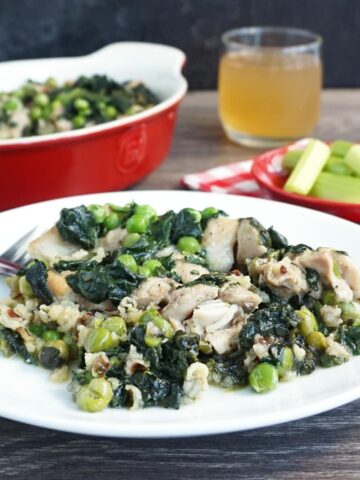
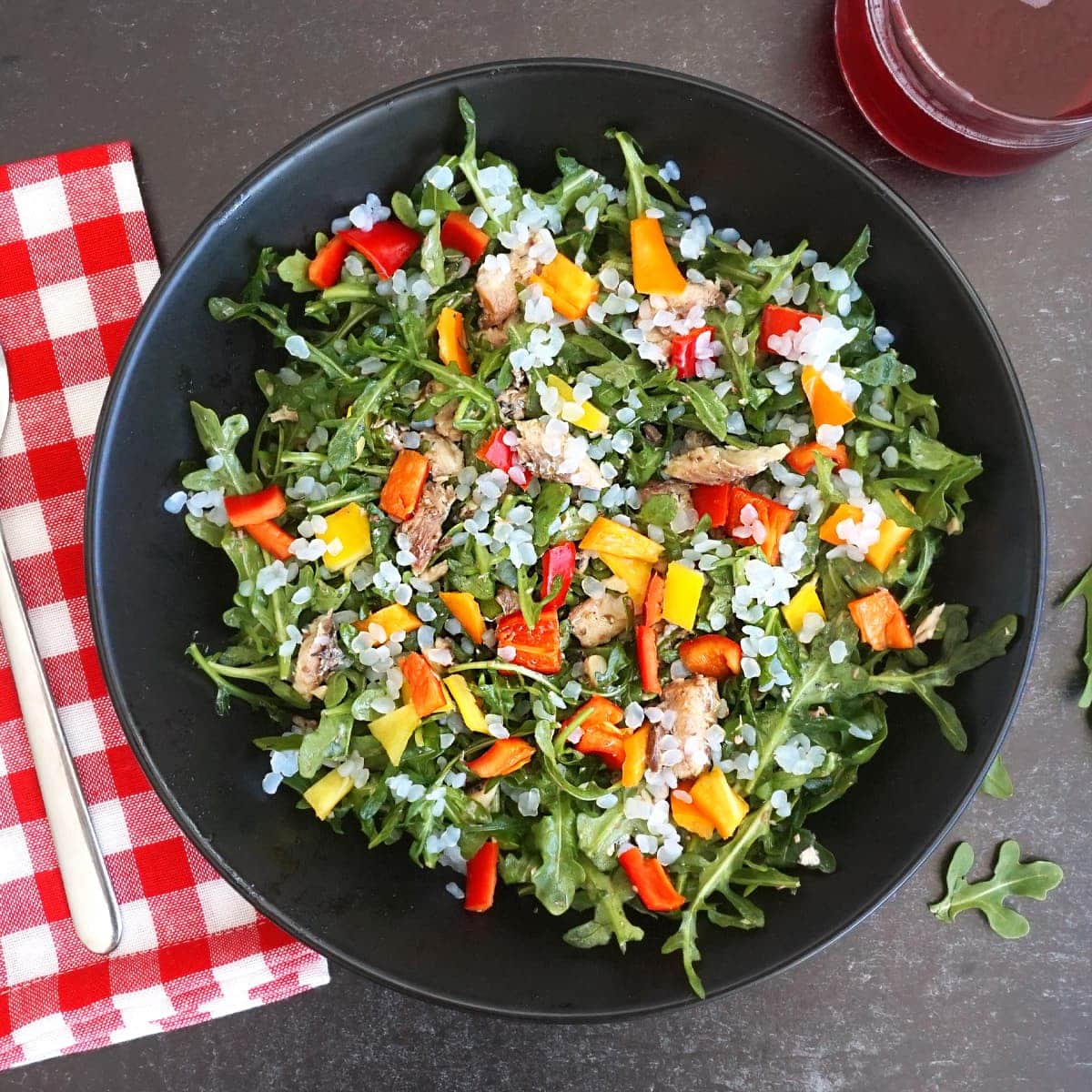
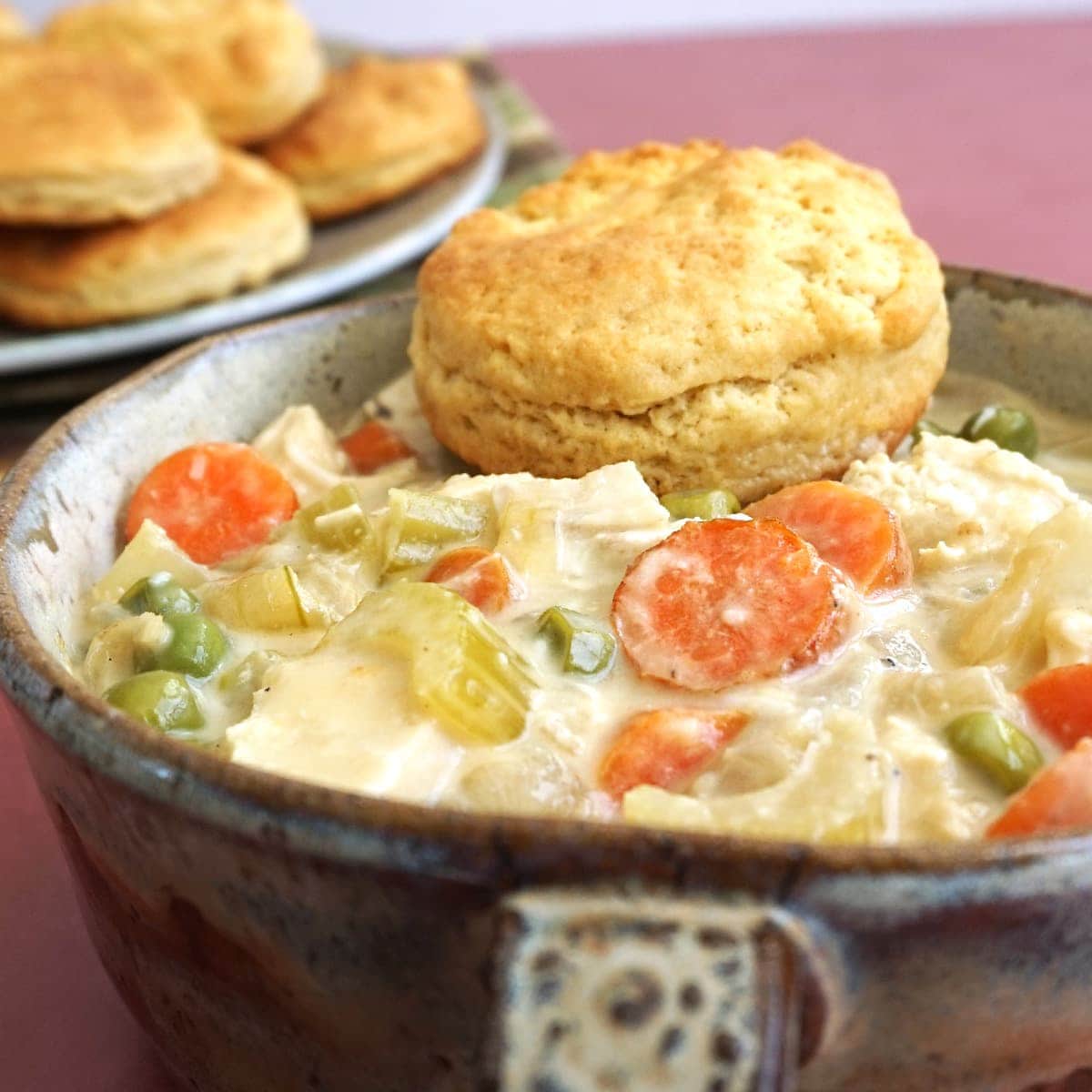
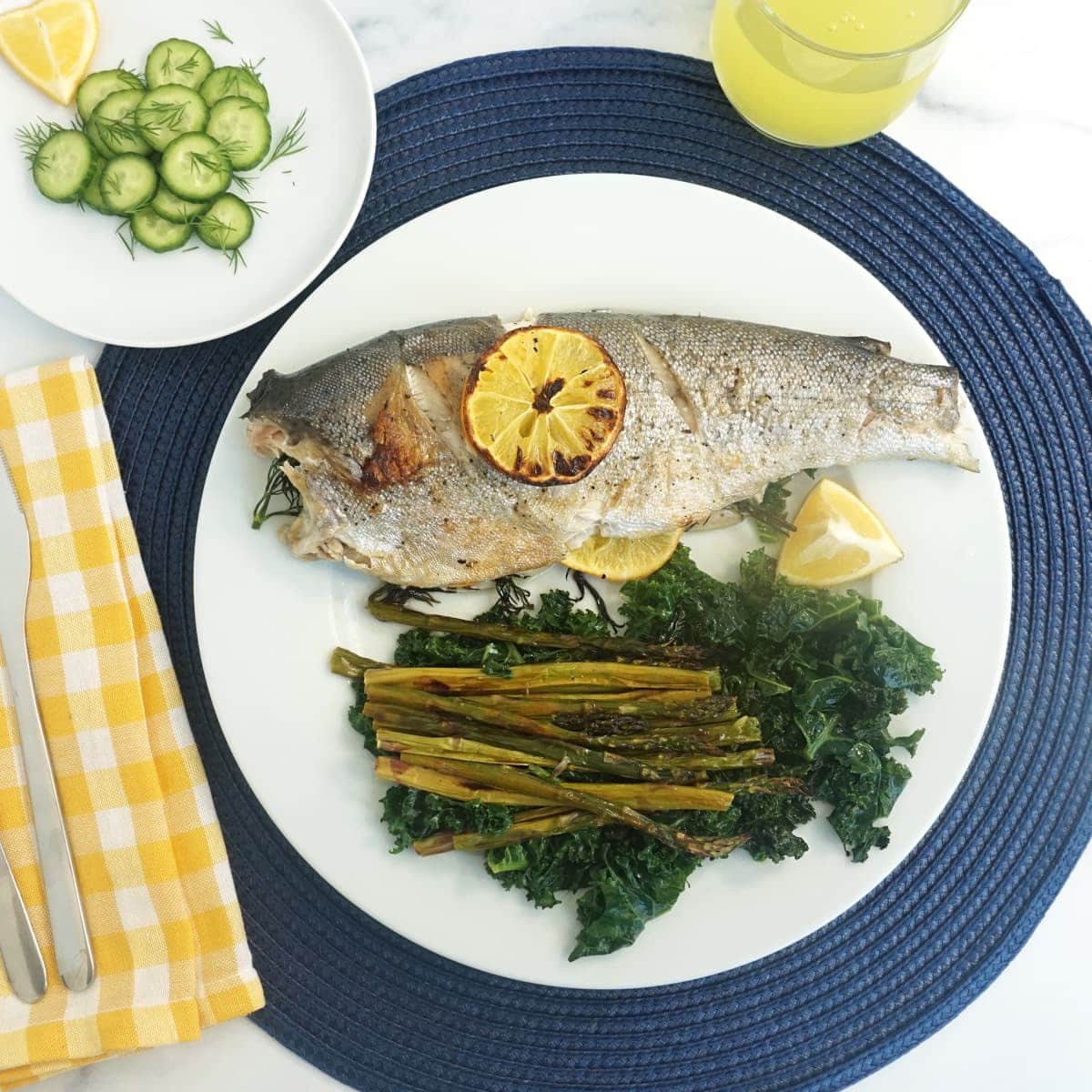
Calvin
While this was not bad, the Japchae remains my favorite between the two. The main reason is that Healthy Noodles (konjac) is so inferior to kelp noodles. Kelp noodles are just so wonderfully similar to what I’m used to from pre-keto days, plus the Japchae recipe itself is fantastic.
For the Lo Mein, I made some modifications to the recipe. I added additional soy sauce, sesame oil, and salt for flavoring. I used bok choy instead of zucchini. I used shrimp instead of tofu. And, I think the time for cooking the veggies here is too long. The final result was all right, but I’ll be sticking with Japchae for the foreseeable future.